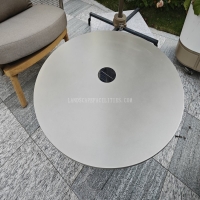Welcome to the website for landscape facilities products and knowledge.
Are there any options for integrating humidity sensors to monitor moisture levels?
Humidity sensors are essential tools for monitoring moisture levels in various environments, from industrial settings to smart homes. Integrating these sensors can be achieved through multiple options, depending on the application and required precision.
1. Standalone Humidity Sensors: These are simple, cost-effective devices that measure humidity and display readings locally. They are ideal for small-scale applications like greenhouses or storage rooms.
2. Wireless IoT Sensors: For advanced monitoring, IoT-enabled humidity sensors can transmit data to cloud platforms via Wi-Fi or Bluetooth. This allows real-time tracking and alerts, perfect for smart homes or large facilities.
3. Integrated HVAC Systems: Many modern HVAC systems include built-in humidity sensors to optimize climate control. These systems automatically adjust ventilation to maintain desired moisture levels.
4. Industrial Sensor Networks: In manufacturing or agriculture, networked humidity sensors can be linked to centralized control systems, enabling large-scale environmental management.
5. DIY Solutions with Microcontrollers: Hobbyists can integrate humidity sensors like the DHT22 with Arduino or Raspberry Pi for custom projects, offering flexibility and low-cost experimentation.
Choosing the right integration method depends on accuracy needs, scalability, and budget. Whether for comfort, safety, or efficiency, humidity sensors provide critical insights into moisture levels, ensuring optimal conditions in any setting.
Related search:

Recommendation
Outdoor stainless steel table with solar-powered ambient lighting feature - excellent design.